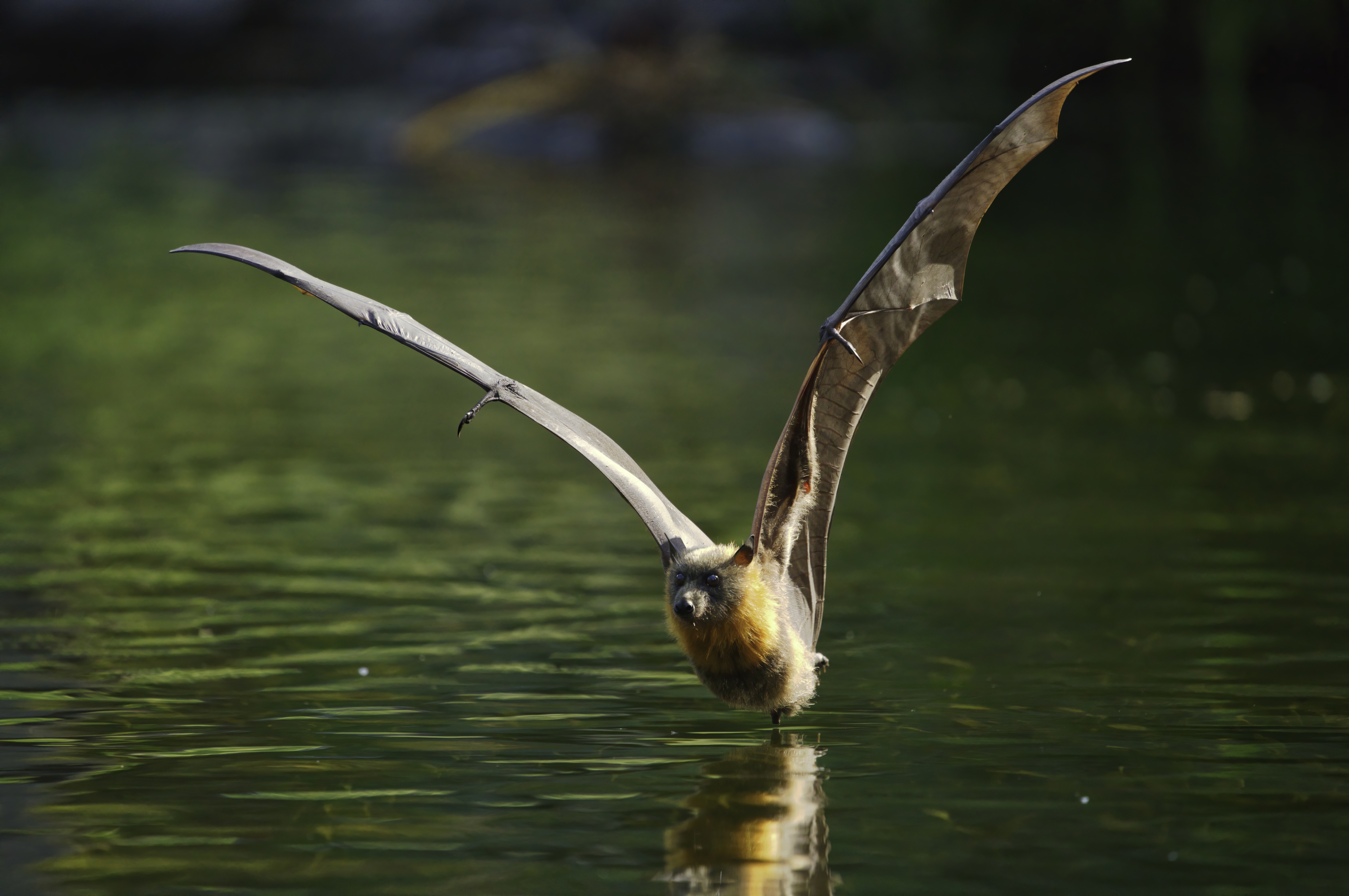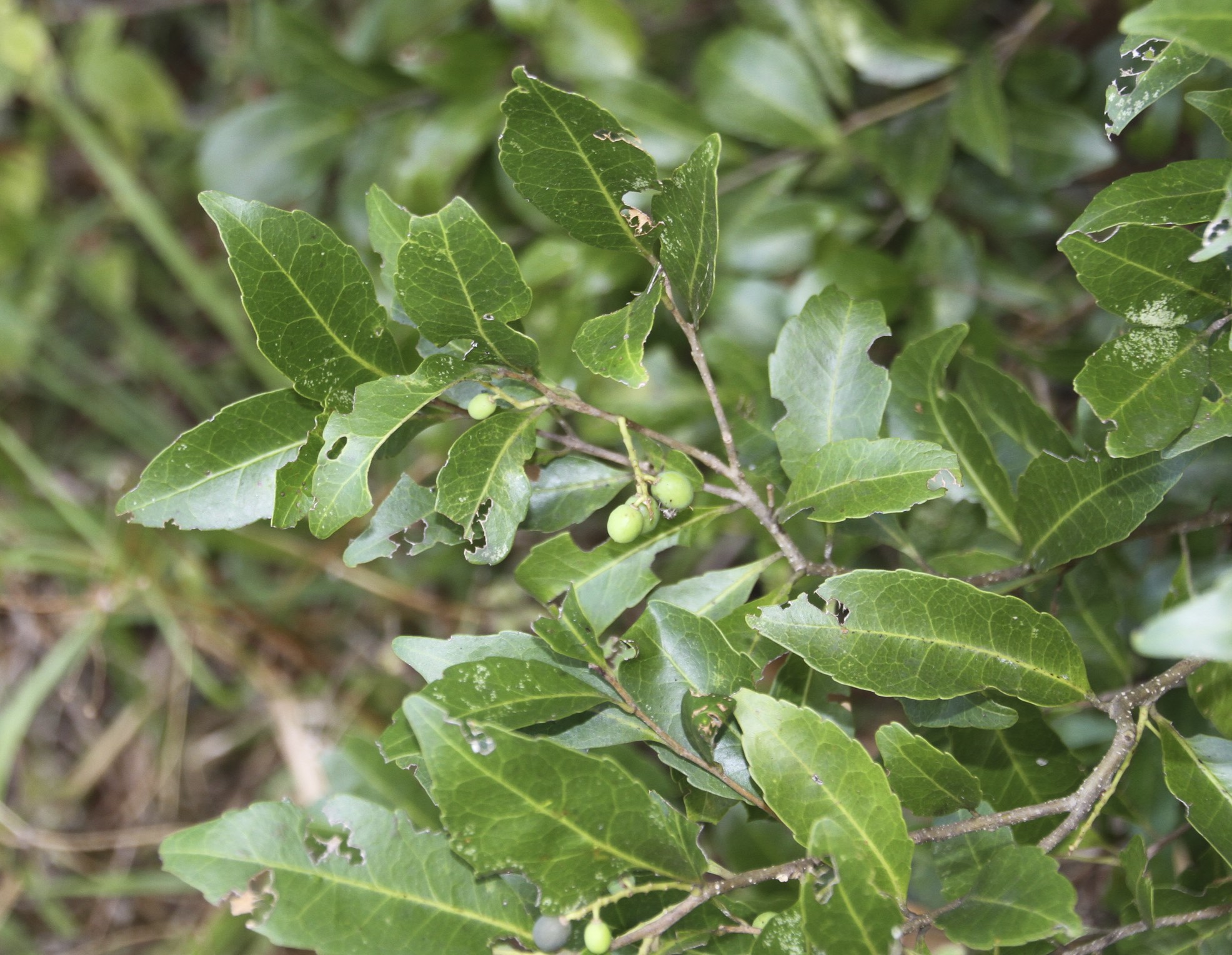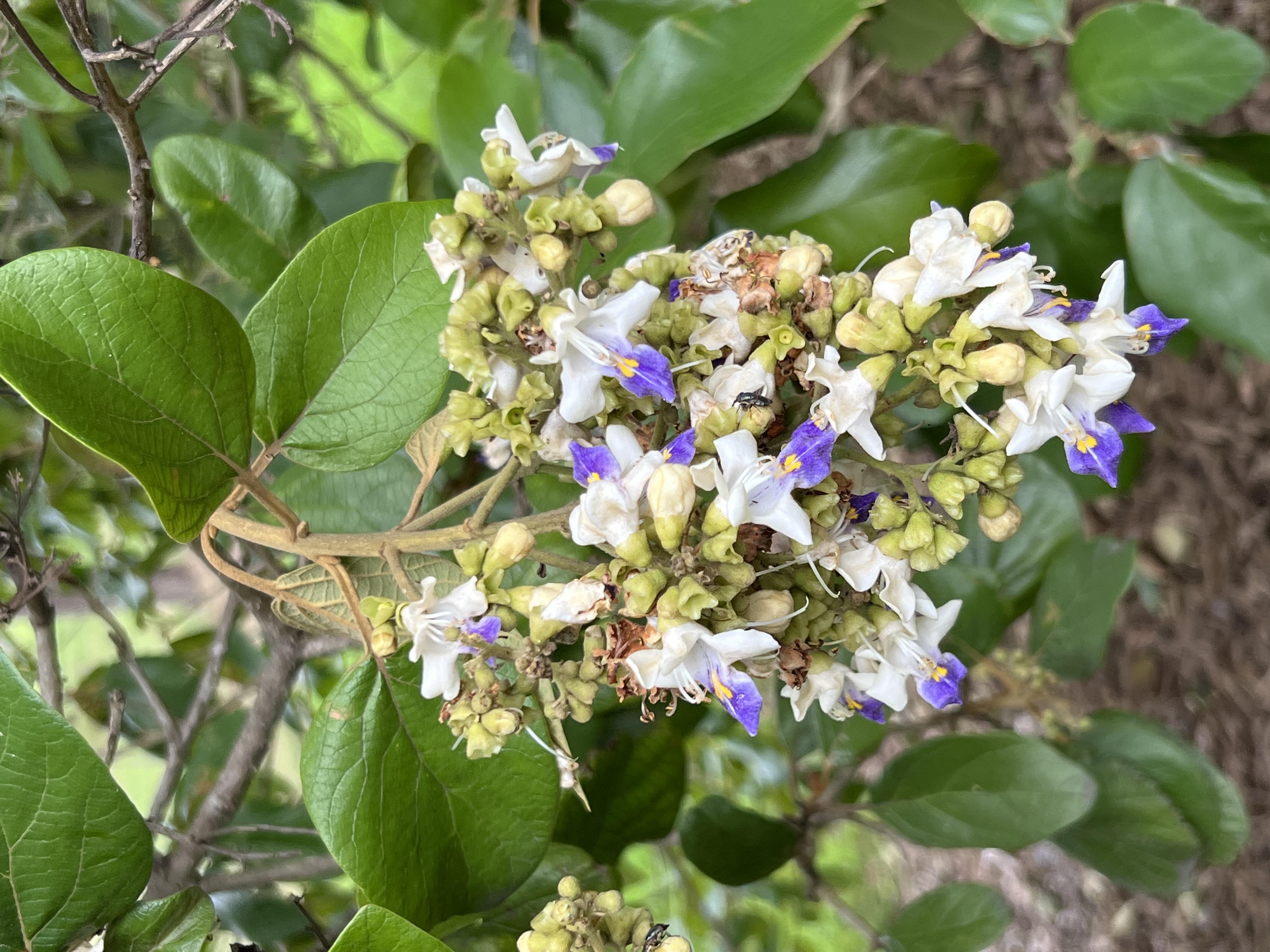|
Booyong Flora Reserve
The Booyong Flora Reserve is a protected nature reserve located in Booyong in the Northern Rivers region of New South Wales, Australia. The subtropical jungle is situated northeast of Lismore and is a remnant of the Big Scrub, of which less than one percent of the original Big Scrub remains. Description The red-brown soil is derived from a basaltic flow from the nearby Mount Warning and later volcanic flows from the Nightcap Range. Average annual rainfall at Lismore is . 90 species of rainforest trees have been recorded in this small area. Significant rainforest tree species include White Booyong, Small-leaved Fig, Olivers Sassafras, Black Bean, Grey Walnut, Blush Walnut, Koda, Red Cedar, White Beech, Pepperberry and Hard Quandong. Rainforest myrtles at Booyong reserve are well represented. The most striking are the large Francis Water Gums; one of which has a wide girth. A sealed road divides the reserve, with a grassy area in the western corner, surrounded by r ... [...More Info...] [...Related Items...] OR: [Wikipedia] [Google] [Baidu] |
White Booyong
''Argyrodendron trifoliolatum'' is an Australian rainforest tree. It is native to eastern Queensland and northeastern NSW, Australia, where it is known as white booyong. Booyong, New South Wales is named after the tree. It can grow up to 45 metres tall.Floyd, A. 1990: ''Australian Rainforests in New South Wales, Volume 1''. Surrey Beatty & Sons Pty Ltd, Chipping Norton, NSW. Its flowers, produced from July to September, are in great numbers and are creamy-colored bell-shaped. The most distinctive feature of ''Argyrodendron trifoliolatum'' is that the trunks form large characteristic buttresses. The natural habitats of the species are subtropical and dry rainforests and scrubby watercourses. It is a shade tolerant climax species and one of the main tree species in warm subtropical rainforests. Image:White Booyong - Alstonville2.jpg, White booyong - Davis Scrub Nature Reserve Image:White Booyong - Booyong Reserve.jpg, Twin white booyong - Booyong Flora Reserve Image:White Booyong ... [...More Info...] [...Related Items...] OR: [Wikipedia] [Google] [Baidu] |
Castanospermum Australe
''Castanospermum australe'' (Moreton Bay chestnut or blackbean), the only species in the genus ''Castanospermum'', is a flowering plant in the family Fabaceae, native to the east coast of Australia in Queensland and New South Wales, and to the Pacific islands of Vanuatu, New Caledonia, and the island of New Britain (Papua New Guinea). Growth It is a large evergreen tree growing to tall, though commonly much smaller. The leaves are long and broad, pinnate, with 11-15 leaflets. The flowers are bicoloured red and yellow, long, produced in racemes long. The fruit is a cylindrical pod long and diameter, the interior divided by a spongy substance into one to five cells, each of which contains a large chestnut-like seed. Common names The 1889 book 'The Useful Native Plants of Australia' records the common names of ''Castanospermum australe'' as "Moreton Bay Chestnut" and "Bean tree" and notes that it was called "Irtalie" by Aboriginal people of the Richmond and Clarence Rivers ... [...More Info...] [...Related Items...] OR: [Wikipedia] [Google] [Baidu] |
Aristolochia Praevenosa
''Aristolochia praevenosa'', synonym ''Pararistolochia praevenosa'', is an Australian plant in the birthwort family, native to Queensland and New South Wales. The Richmond birdwing butterfly vine grows in subtropical rainforest in coastal areas north from Wollongbar, in far north eastern New South Wales and adjacent areas in south eastern Queensland. It has been recorded as far north as the Mary River. It also grows in tropical north eastern Queensland, where it is a food plant for the Cairns birdwing butterfly. Richmond birdwing butterfly This vine is the main food species for the Richmond birdwing butterfly. This plant has suffered from habitat loss since the appearance of European settlers. Former areas of its habitat have been almost completely destroyed, such as at the Big Scrub. In recent times there have been programs by schools and government authorities, attempting to encourage new plantings of this vine. This is mostly for the benefit of the Richmond birdwing bu ... [...More Info...] [...Related Items...] OR: [Wikipedia] [Google] [Baidu] |
Richmond Birdwing
''Ornithoptera richmondia'', the Richmond birdwing, is a species of birdwing butterfly that is endemic to Australia. It is the second smallest of the birdwing species, the smallest being '' Ornithoptera meridionalis''. Distribution Historically, ''O. richmondia'' is recorded from rainforests southwards from Maryborough to the Clarence River in New South Wales. Due to widespread habitat loss throughout its range, its distribution is much more restricted, especially in Queensland. Its present-day range is from Kin Kin and Pomona, North Arm, Yandina, Coolum (although this population is now extinct due to drought), Parklands and Nambour, Diddillibah, Buderim, Eudlo, Palmwoods, the Mooloolah and Diamond Valleys, the entire Blackall Range southeast from Kenilworth to the state forest near the Caloundra Turnoff and west to Peachester and the Stanley River, and the Conondale Range southwards to Mount Mee. South of Brisbane, the species is recorded along the Nerang River and ... [...More Info...] [...Related Items...] OR: [Wikipedia] [Google] [Baidu] |
Grey-headed Flying Fox
The grey-headed flying fox (''Pteropus poliocephalus'') is a megabat native to Australia. The species shares mainland Australia with three other members of the genus ''Pteropus'': the little red ''Pteropus scapulatus, P. scapulatus'', spectacled ''Pteropus conspicillatus, P. conspicillatus'', and the black ''Pteropus alecto, P. alecto''. The grey-headed flying fox is the largest bat in Australia. The grey-headed flying fox is endemic to the south-eastern forested areas of Australia, principally east of the Great Dividing Range. Its range extends approximately from Bundaberg, Queensland, Bundaberg in Queensland to Geelong, Victoria, Geelong in Victoria (Australia), Victoria, with outlying colonies in Ingham, Queensland, Ingham and Finch Hatton, Queensland, Finch Hatton in the north, and in Adelaide, South Australia, Adelaide in the south. In the southern parts of its range it occupies more extreme latitudes than any other ''Pteropus'' species. As of 2021 the species is listed as ... [...More Info...] [...Related Items...] OR: [Wikipedia] [Google] [Baidu] |
ABC News (Australia)
ABC News, or ABC News and Current Affairs, is a public news service produced by the Australian Broadcasting Corporation. Broadcasting within Australia and the rest of the world, the service covers both local and world affairs. The division of the organisation, which is called ABC News, Analysis and Investigations. is responsible for all news-gathering and coverage across the Australian Broadcasting Corporation's various television, radio, and online platforms. Some of the services included under the auspices of the division are the ABC News TV channel (formerly ABC News 24); the long-running radio news programs, '' AM'', '' The World Today'', and '' PM''; ABC NewsRadio, a 24-hour continuous news radio channel; and radio news bulletins and programs on ABC Local Radio, ABC Radio National, ABC Classic FM, and Triple J. ABC News Online has an extensive online presence which includes many written news reports and videos available via ABC Online, an ABC News mobile app (ABC Liste ... [...More Info...] [...Related Items...] OR: [Wikipedia] [Google] [Baidu] |
Syzygium Francisii
''Syzygium francisii'' is a native Australian tree, common on the eastern sea board, between Morisset, New South Wales (33° S) and Gladstone, Queensland (23° S). Common names include giant water gum, rose satinash, and Francis water gum. The habitat of ''Syzygium francisii'' is rainforest on basaltic or fertile alluvial soils. Several fine examples may be seen at the Royal Botanic Gardens, Sydney. An often seen ''Syzygium francisii'' is at the start of the Mount Warning walking track in far north eastern New South Wales. Description ''Syzygium francisii'' is a medium to large size tree, occasionally reaching over 30 metres in height and a 150 cm in trunk diameter. The tree's crown appears dark and dense. The bark is a scaly reddish light brown, with depressions caused by the shedding of scales of bark. Prominent buttresses form at the base. Leaves, flowers and fruit The leaves are opposite, simple, entire, 4 to 8 cm long drawn out into a long point at the tip. ... [...More Info...] [...Related Items...] OR: [Wikipedia] [Google] [Baidu] |
Myrtaceae
Myrtaceae, the myrtle family, is a family of dicotyledonous plants placed within the order Myrtales. Myrtle, pōhutukawa, bay rum tree, clove, guava, acca (feijoa), allspice, and eucalyptus are some notable members of this group. All species are woody, contain essential oils, and have flower parts in multiples of four or five. The leaves are evergreen, alternate to mostly opposite, simple, and usually entire (i.e., without a toothed margin). The flowers have a base number of five petals, though in several genera, the petals are minute or absent. The stamens are usually very conspicuous, brightly coloured, and numerous. Evolutionary history Scientists hypothesize that the family Myrtaceae arose between 60 and 56 million years ago (Mya) during the Paleocene era. Pollen fossils have been sourced to the ancient supercontinent Gondwana. The breakup of Gondwana during the Cretaceous period (145 to 66 Mya) geographically isolated disjunct taxa and allowed for rapid speciation; i ... [...More Info...] [...Related Items...] OR: [Wikipedia] [Google] [Baidu] |
Elaeocarpus Obovatus
''Elaeocarpus obovatus'', commonly known as hard quandong, blueberry ash, whitewood, grey carabeen, freckled oliveberry or gray carrobeen, is a species of flowering plant in the family Elaeocarpaceae and is endemic to eastern Australia. It is a tree with buttress roots at the base of the trunk, egg-shaped to lance-shaped leaves with the narrower end towards the base, racemes of white flowers, and blue, oval fruit. Description ''Elaeocarpus obovatus'' is sometimes a small tree tall, and sometimes a tall tree growing to a height of with buttress roots at the base of a trunk that is up to in diameter. The outer bark is smooth, grey and thin with corky irregularities. The leaves are arranged alternately, egg-shaped to lance-shaped with the narrower end towards the base, long and wide on a petiole long. The edges of the leaves are wavy, scalloped or toothed and the midrib is raised on the upper and lower surfaces. The flowers are arranged in racemes of ten to twenty long, ea ... [...More Info...] [...Related Items...] OR: [Wikipedia] [Google] [Baidu] |
Cryptocarya Obovata
''Cryptocarya obovata'' is a species of laurel growing on basaltic and fertile alluvial soils in eastern Australian rainforests. It is found from Wyong (33° S) in New South Wales to Gympie (27° S) in the state of Queensland. Extinct in the Illawarra region (34° S), allegedly last seen in the Illawarra in 1818 by Allan Cunningham. * The species was included in the Prodromus Florae Novae Hollandiae et Insulae Van Diemen, 402 (1810) Description ''Cryptocarya obovata'', known as the pepperberry or white walnut, reaches a height of 40 metres and a trunk diameter of 90 cm. The hairy underside of the leaves gives the tree a rusty appearance when viewed from below. Trunk, bark and leaves The trunk is straight and round in cross section, usually buttressed. The bark is grey or brown and usually fairly smooth. Vertical lines of pustules are often seen. Leaves are alternate, obovate or oblong, 6 to 12 cm long, with a round tip. Upper surface smooth and glossy, undersi ... [...More Info...] [...Related Items...] OR: [Wikipedia] [Google] [Baidu] |
White Beech
''Gmelina leichhardtii'', the white beech, is a tree of eastern Australia. Scattered individuals or small groups of trees naturally occur from the Illawarra district of New South Wales (34½° S) to near Proserpine in tropical Queensland. The white beech or grey teak is a fast-growing tree, growing on volcanic and alluvial soils in areas of moderate to high rainfall. It also grows on poorer sedimentary soils in fire free areas. White beech may occasionally be seen in Australian rainforests, though their status is considered "uncommon". Unlike the Australian red cedar, the white beech has not recovered particularly well after logging in the 19th and 20th centuries. Taxonomy and naming Ferdinand von Mueller described the white beech as ''Vitex leichhardtii'' in 1862, from collections near Myall Creek by Ludwig Leichhardt and Clarence River by Dr. Hermann Beckler. George Bentham reassigned it to the genus ''Gmelina'' in his 1870 ''Flora Australiensis''. The genus name honours ... [...More Info...] [...Related Items...] OR: [Wikipedia] [Google] [Baidu] |
Toona Ciliata
''Toona ciliata'' is a forest tree in the mahogany family which grows throughout southern Asia from Afghanistan to Papua New Guinea and Australia. Names It is commonly known as the red cedar (a name shared by other trees), toon or toona (also applied to other members of the genus ''Toona''), Australian red cedar, Burma cedar, Indian cedar, Moulmein cedar or the Queensland red cedar. It is also known as Indian mahogany. Indigenous Australian names include Polai in the Illawarra. Woolia on the Richmond River, Mamin & Mugurpul near Brisbane, and Woota at Wide Bay. Also called Ai saria in Timor-Leste. Description The tree has extended compound leaves up to 90 cm with 10-14 pairs of leaflets which are narrow and taper towards the tip. Each leaflet is between 4.5 and 16 cm long. The species can grow to around in height and its trunk can reach in girth with large branches that create a spreading crown. It is one of Australia's few native deciduous trees, with the leaves ... [...More Info...] [...Related Items...] OR: [Wikipedia] [Google] [Baidu] |
.jpg)




_W_IMG_2431.jpg)


